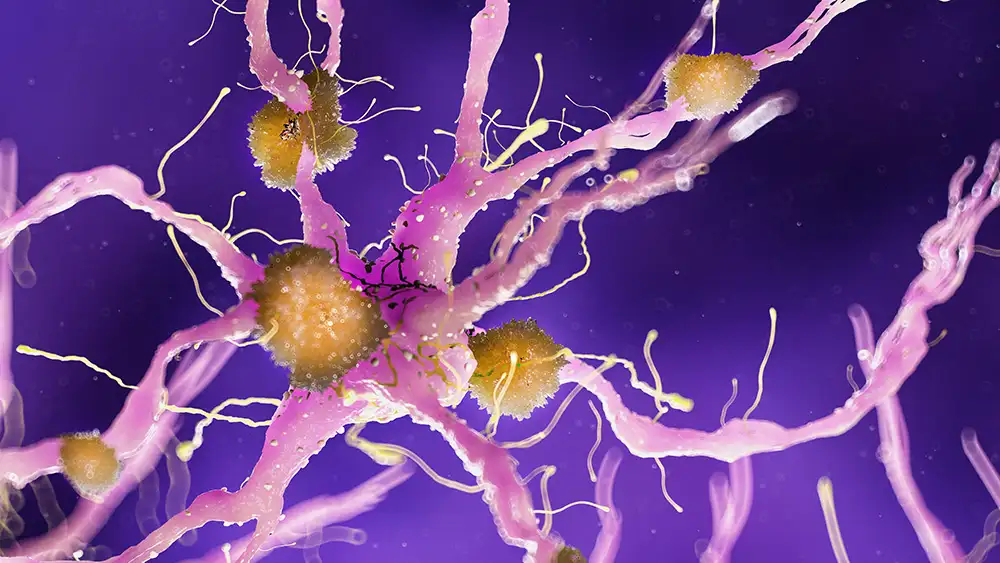A University of Wisconsin-Madison (UW-Madison) research team has found evidence in a new study that was published in the Proceedings of the National Academy of Science that lab-grown retinal neurons have the ability to restore synaptic function and treat neurodegenerative eye disease.
The findings, which were recently published (DOI: 10.1073/pnas.2213418120), are noteworthy because no previous research has found that retinal organoid cells, a three-dimensionally organized cell cluster that mimics the retina, can regain synaptic function following disassembly and attachment to a two-dimensional culture system.
The cells’ capacity to reestablish function after detachment suggests that lab-grown neural implants may one day be used to replace aged neurons and help blind people regain their vision.
David Matthew Gamm, MD, Ph.D., professor of ophthalmology and visual sciences at the University of Wisconsin–Madison and director of the McPherson Eye Research Institute, stated in a press release that his group aimed to use the cells from those organoids as replacements for the same types of cells that have been lost as a result of retinal diseases. Will the cells function properly once they are separated, though, after been nurtured in a laboratory plate for months as compact clusters? The introduction of them into a patient’s eye depends on doing that.
Retina, Rods and Regeneration
Photoreceptors (rods and cones), retinal interneurons, and retinal ganglion cells were the three retinal cell types that the study concentrated on (RGCs). These cells are a part of the neural network in the retina that interprets nerve impulses from light to process visual information.
Atypical alterations in photoreceptors and RGCs are frequently an early indicator of retinal degeneration, which includes conditions like glaucoma, which causes vision loss due to injury to the optic nerve, and retinitis pigmentosa, a genetic disorder that gradually destroys photoreceptors (Frontiers in Cellular Neuroscience, DOI: 10.3389/fncel.2015.00395).
Humans and other creatures that are mammals are not capable of regenerating lost neurons. As a result, foreign cell transplantation or a morphological and functional change in nearby and existing cell types would be necessary for any attempts to partially restore vision.
All retinal neurons must create synaptic connections with other neurons, whether they are foreign or endogenous, in order to enable sight. The area where nerve impulses are discharged to cause change or activity in the body is known as a synapse, also known as a neuronal junction. This area is at the end of a neuronal process or cord, generally an axon. A “handshake” between two neurons is how the UW-Madison team describes synaptic activation.
The team has demonstrated that photoreceptors derived from organoids behave similarly to their in vivo counterparts and can even form axons since developing retinal organoids more than ten years ago (Cell Stem Cell, DOI: 10.1016/j.stem.2022.01.002 and Cell Reports, DOI: 10.1016/j.celrep.2022.110827). Gamm claimed that the final component of the puzzle was to determine whether these cords could connect to or shake hands with other types of retinal cells in order to exchange information.
Applying the Scientific Method
Human pluripotent stem cells (hPSCs) were isolated from 80-day-old retinal organoids (ROs) using papain, an enzyme that ensures the cells start off as distinct individuals by obliterating synaptic connections between neurons. The hPSCs were given an 80-day window of time to develop into the desired cells.
The scientists monitored the activity of each neuron using a monosynaptic tracing test. A lentivirus containing a green fluorescent DNA tag and other cellular machinery, including a viral binding receptor, was given to about 5% of the hPSCs ten days after separation.
A replication-deficient monosynaptic retrograde rabies virus with a red fluorescent tag was injected into the neurons five days later. The virus was genetically modified to enter mammalian cells and attach to the identical viral receptors given to the hPSCs five days earlier. These chosen “starting” cells would have a green nucleus and red cytoplasm because to the fluorescent tags.
The microorganism can move from neuron to neuron via synaptic transmission as a retrograde virus. Any new or “traced” cell that has a crimson cytoplasm and an unmarked nucleus is the consequence of a starting cell passing the virus to another cell through a synaptic link. Retrograde refers to the fact that the virus crosses the synapse in the opposite direction from how conventional neurotransmitters do.
De novo retinal neurons may successfully undergo synaptogenesis and maintain full function after detaching from an organoid, as shown by the team’s observations using confocal and high-content widefield imaging. The traced cells increased to 6.2% of the cellular population, they found.
Bright Future for Replacement Therapies
The team’s future research will focus on determining if cells can mature synaptic architecture after prolonged detachment. Gamm says that in order to feel more convinced that they are moving in the right way, he and his colleagues have been piecing this story together in the lab, one piece at a time. They believe that everything will eventually lead to human clinical trials, which are the obvious next step.
Thanks to the team’s innovation, cultured cells can now be thoroughly tested in human clinical trials for potential cell replacement therapies. In the past, preclinical investigations used restricted animal models to implant human retinal neurons. Currently, hPSC-derived RO neurons can be freely replicated and function nearly identically to human in vivo cells.
The team’s discoveries are already having a noticeable impact. Gamm co-founded Opsis Therapeutics, a biotech research firm that will apply some of the team’s insights to the development of replacement treatments for age-related macular degeneration.
Subscribe
to get our
LATEST NEWS
Related Posts

Neuroscience & Neuropharmacology
Sygnature Discovery Revolutionizes Neuroinflammation Research with In Vivo LPS Model
Innovative LPS model unveils new possibilities for understanding life-limiting neuroinflammatory conditions.

Neuroscience & Neuropharmacology
Unveiling Alzheimer’s Complexity: Decoding the Elusive Amyloid Beta Fibrils
Lecanemab found to confer shielding effect against detrimental effects of unbound amyloid beta fibrils.
Read More Articles
Synthetic Chemistry’s Potential in Deciphering Antimicrobial Peptides
The saga of antimicrobial peptides unfolds as a testament to scientific ingenuity and therapeutic resilience.












